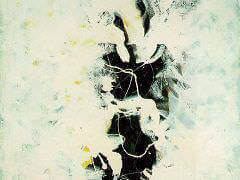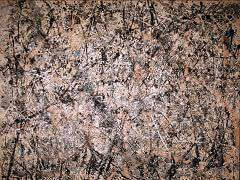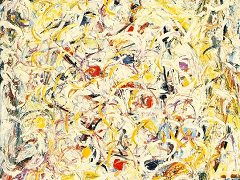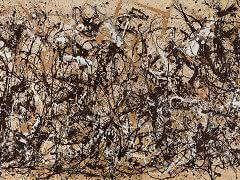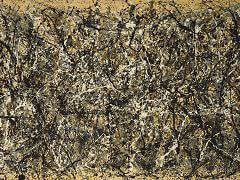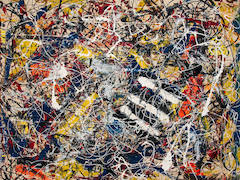Alchemy, 1947 by Jackson Pollock

Alchemy is one of Jackson Pollock's earliest poured paintings, executed in the revolutionary technique that constituted his most significant contribution to twentieth-century art. After long deliberation before the empty canvas, he used his entire body in a picture-making process that can be described as drawing in paint. By pouring streams of commercial paint onto the canvas from a can with the aid of a stick, Pollock made obsolete the conventions and tools of traditional easel painting. He often tacked the unstretched canvas onto the floor in an approach he likened to that of the Navajo Indian sandpainters, explaining that "on the floor I am more at ease. I feel nearer, more a part of the painting, since this way I can walk around it, work from the four sides and literally be in the painting." Surrealist notions of chance and automatism are given full expression in Pollock's classic poured paintings, in which line no longer serves to describe shape or enclose form, but exists as an autonomous event, charting the movements of the artist's body. As the line thins and thickens it speeds and slows, its appearance modified by chance behavior of the medium such as bleeding, pooling, or blistering.
When Alchemy is viewed from a distance, its large scale and even emphasis encourage the viewer to experience the painting as an environment. The layering and interpenetration of the labyrinthine skeins give the whole a dense and generalized appearance. The textured surface is like a wall on which primitive signs are inscribed with white pigment squeezed directly from the tube. Interpretations of these markings have frequently relied on the title Alchemy; however, this was assigned not by Pollock, but by Ralph Manheim and his wife, neighbors of the Pollocks in East Hampton.



